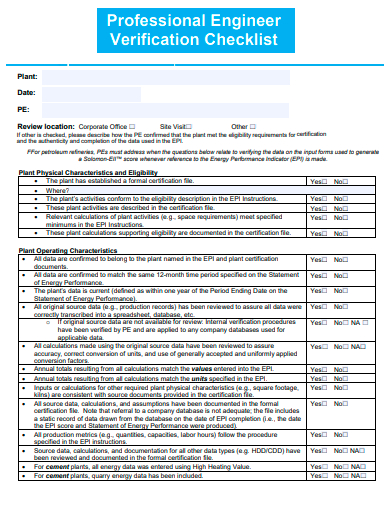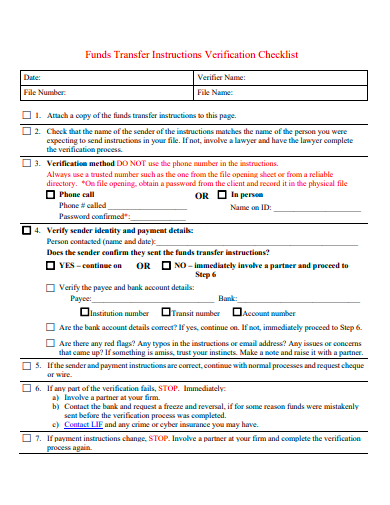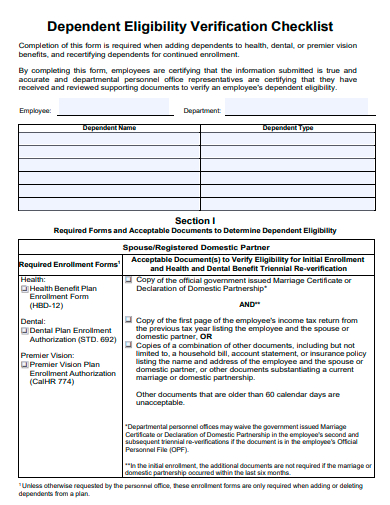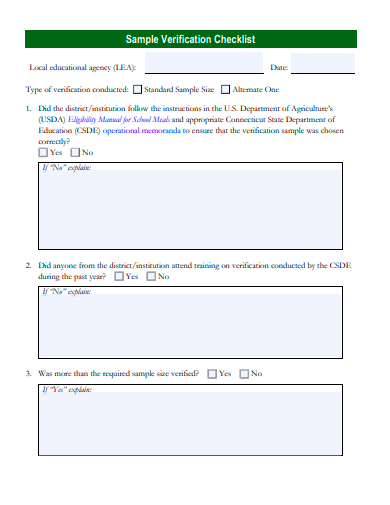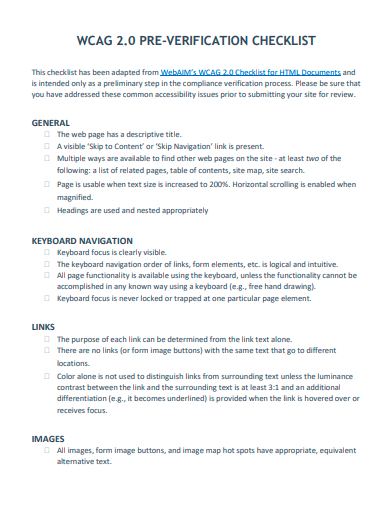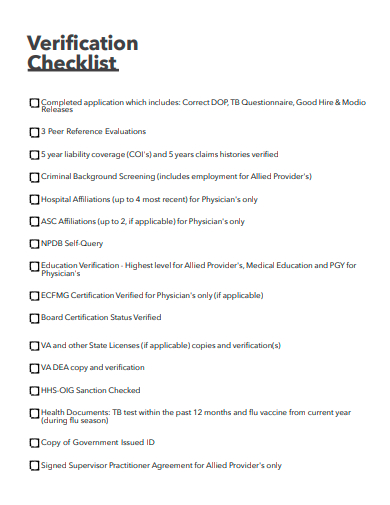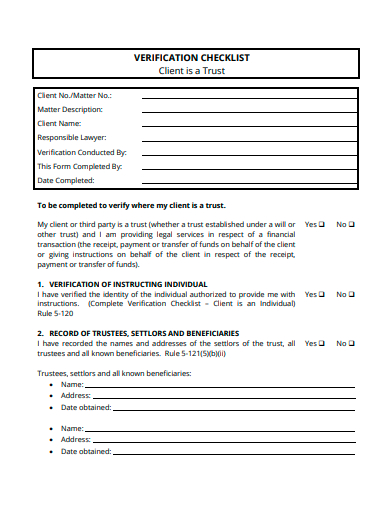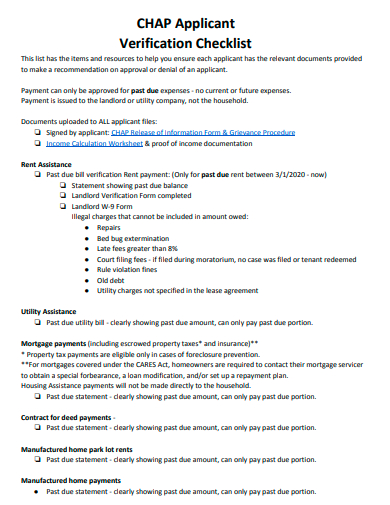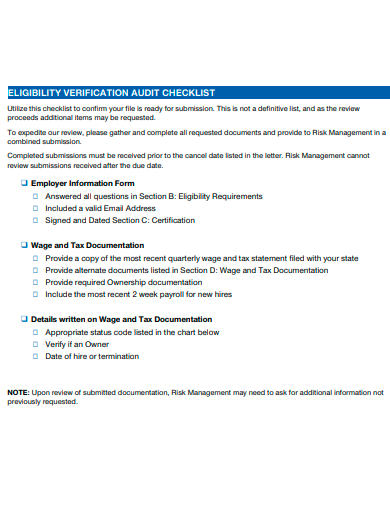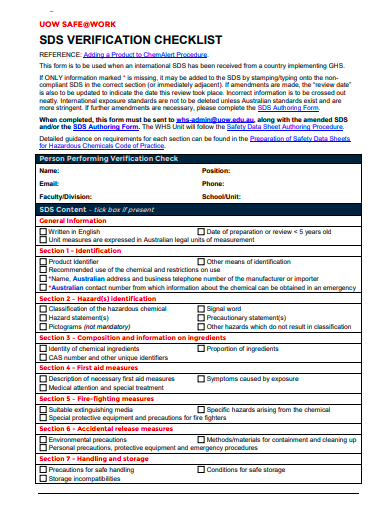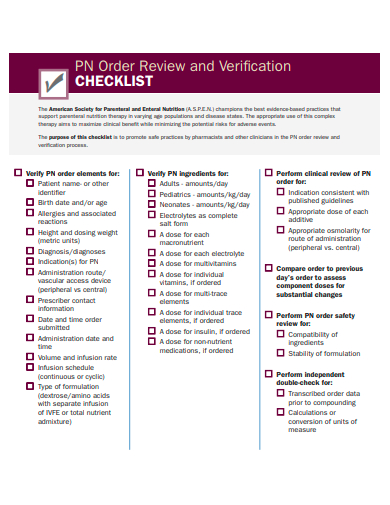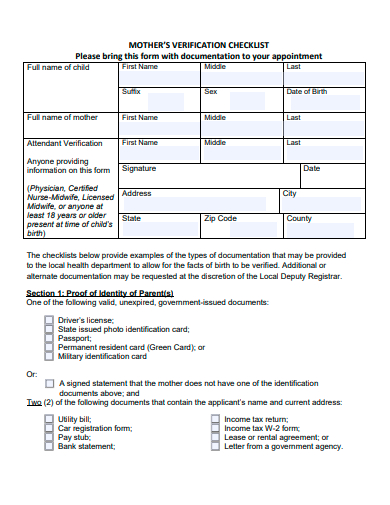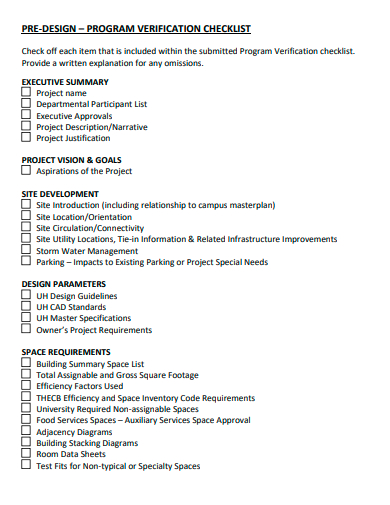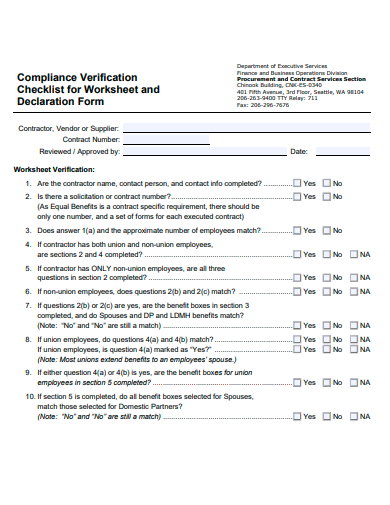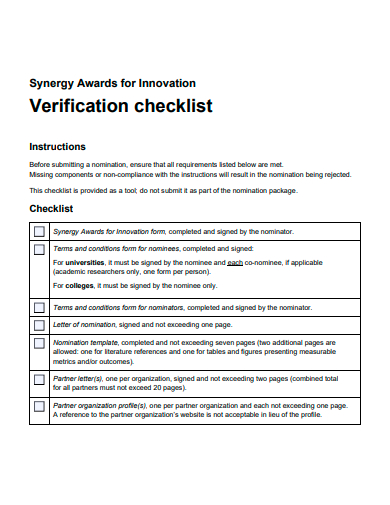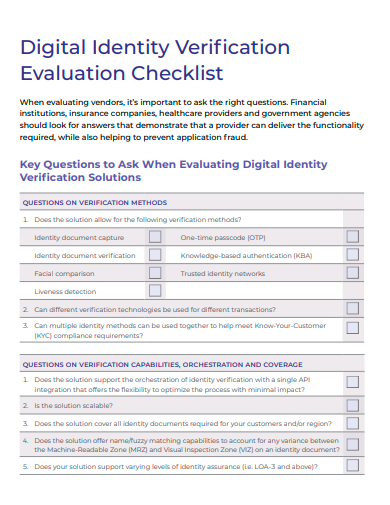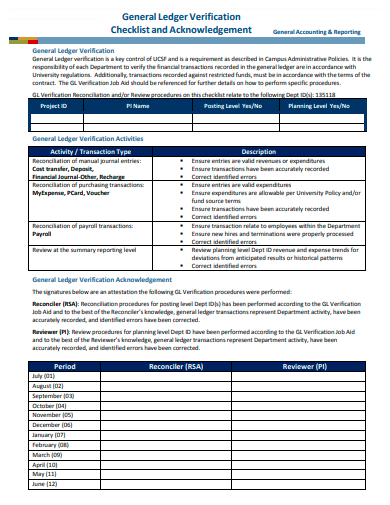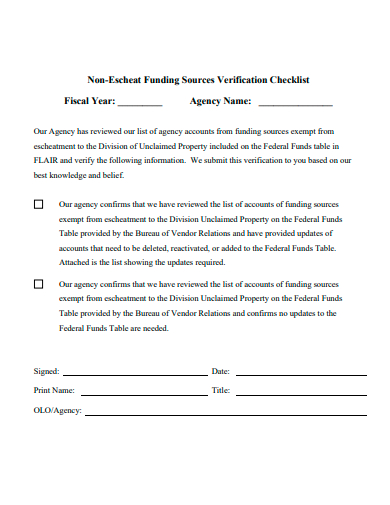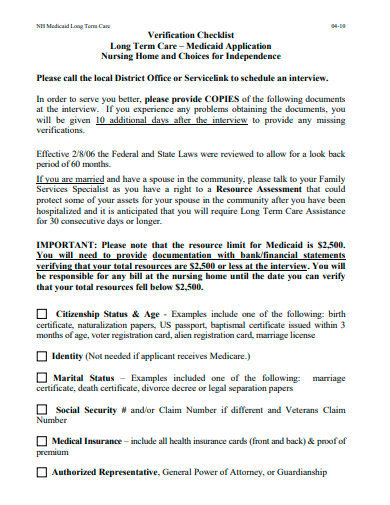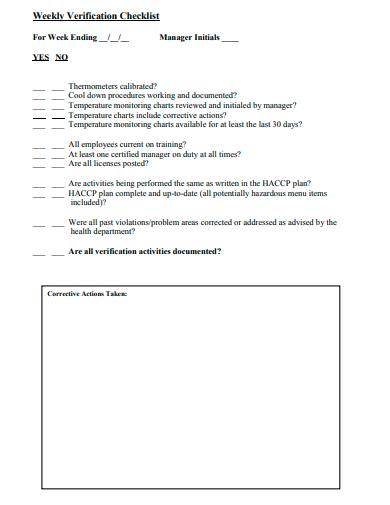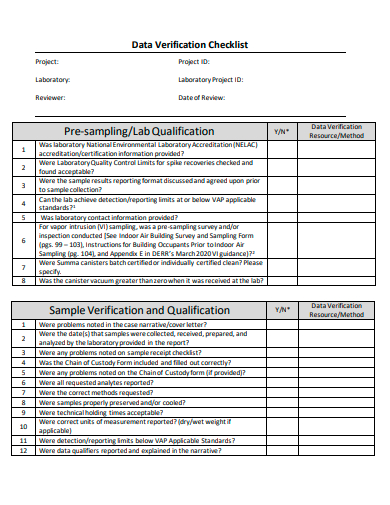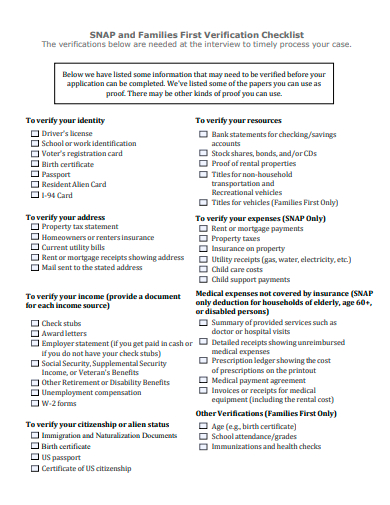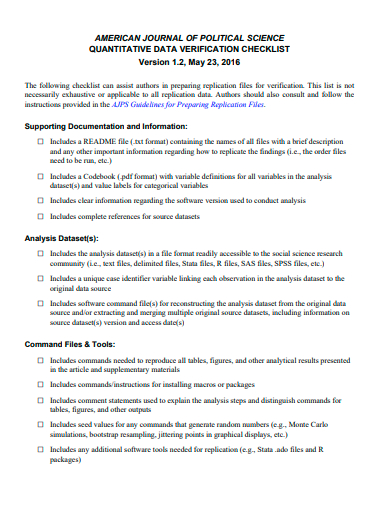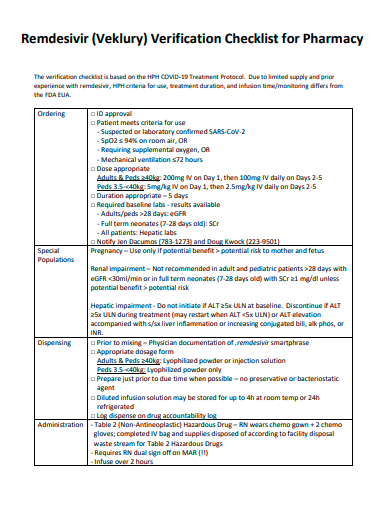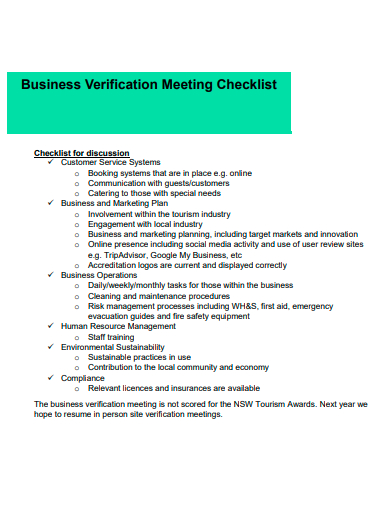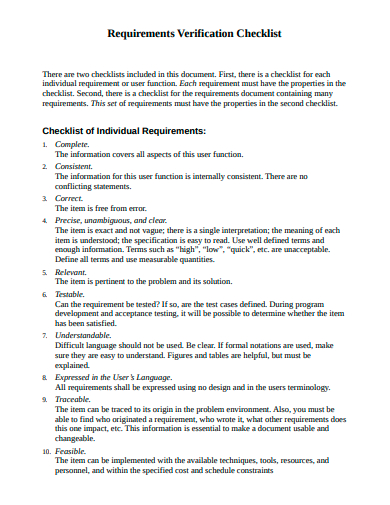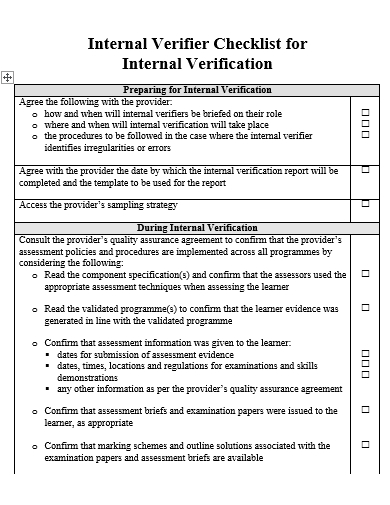Used in a wide variety of industry fields and professions, a verification checklist is a document commonly used for evaluation or assessment purposes. This document is used by professionals like software developers, project managers, regulatory authorities, educational institutions, and more. These entities can also use other templates such as analysis checklists, security checklists, acceptance checklists, screening checklists, safety checklists, and inspection checklists.
33+ Verification Checklist Samples
1. Professional Engineer Verification Checklist Template
2. Verification Checklist Template
3. Funds Transfer Verification Checklist Template
4. Dependent Eligibility Verification Checklist Template
5. Sample Verification Checklist Template
6. Pre-Verification Checklist Template
7. Basic Verification Checklist Template
8. Formal Verification Checklist Template
9. Applicant Verification Checklist Template
10. Safety Training and Orientation Verification Checklist Template
11. Eligibility Verification Audit Checklist Template
12. Verification Checklist Example
13. Order Review and Verification Checklist Template
14. Mothers Verification Checklist Template
15. Program Verification Checklist Template
16. Compliance Verification Checklist Template
17. Standard Verification Checklist Template
18. Digital Identity Verification Evaluation Checklist Template
19. Electronic Plan Check Submittal Verification Checklist Template
20. General Ledger Verification Checklist and Acknowledgement Template
21. Funding Sources Verification Checklist Template
22. Verification Checklist in PDF
23. Weekly Verification Checklist Template
24. Data Verification Checklist Template
25. Asset Verification Checklist Template
26. First Verification Checklist Template
27. Identity Verification Checklist Template
28. Quantitative Data Verification Checklist Template
29. Biology Workbook Verification Checklist Template
30. Verification Checklist for Pharmacy Template
31. Business Verification Meeting Checklist Template
32. Verification Documentation Checklist Template
33. Requirements Verification Checklist Template
34. Internal Verification Checklist Template
What is a Verification Checklist?
Verification checklists are tools that various companies and organizations across different industries use to make sure of the accuracy, compliance, and completeness of their policies and procedures, products, and systems. This document contains a list of predefined criteria and requirements that should be validated and verified. A verification checklist also acts as a development roadmap that provides systematic review and confirmation that all important areas are addressed and assessed.
How to Create a Verification Checklist
A verification checklist is used for various processes like software development, quality control, and project management to help in ensuring that possible risks and errors are minimized. It also acts as a reference for teams to monitor and track progress, maintain the consistency of their process, and make sure that high-quality results are delivered. To create a verification checklist, you have to conduct careful planning and consideration of certain requirements for the product, process, or system you will be assessing.
Step 1: Identify the Objectives of Your Verification Checklist
Write a clear definition of the verification process’ objectives by determining the aspects that will be validated like functionality, compliance, and quality standards. Make sure that you have an in-depth understanding of the process’ desired outcomes and the criteria to determine whether your verification is successful or not.
Step 2: List Down Your Verification Criteria
After establishing your verification objectives, break them down into specific requirements and criteria. Make sure that they are measurable, achievable, and clear. You can also include items that cover all necessary aspects that you need to validate to ensure that you are not overlooking anything.
Step 3: Create a Clear Outline for Your Checklist
Organize the verification criteria in a logical manner while making sure that it aligns with your verification process. You can group related items together and make sure that you utilize concise language to make the document easy to understand and follow.
Step 4: Provide the Verification Methods You Will be Following
Provide the definition of the methods and procedures that will be used for every verification step or criterion. These procedures or methods can include testing, inspection, documentation review, or other mean of verification. Make sure that you specify the person who will perform the process and the expected result for every criterion.
FAQs
What are the commonly used types of verification checklists?
The most commonly used types of verification checklists are quality control checklists, software testing checklists, compliance checklists, project management checklists, and audit checklists.
What are the different uses of verification checklists?
Verification checklists are typically used for quality assurance, software testing, regulatory compliance, safety inspections, project management, training and education, audits, research and data validation, process validation, and document review.
What are the benefits of utilizing verification checklists?
With verification checklists, various entities can observe consistency, reduced errors, compliance, time and resource savings, improved accountability, and enhanced communication among staff and stakeholders.
Verification checklists act as a roadmap that companies and organizations use to enhance their efficiency while ensuring the achievement of their business goals or objectives. These checklists were designed and implemented to cover different aspects that are relevant to a specific task at hand. With verification checklists, companies can determine potential challenges or risks, make necessary changes or improvements, and provide accurate and high-quality results.
Related Posts
FREE 17+ Survey Checklist Samples in MS Word | Google Docs | PDF
FREE 18+ Background Checklist Samples in MS Word | Google Sheets | PDF
FREE 18+ Facilitator Checklist Samples in MS Word | Google Sheets | PDF
FREE 18+ Complaint Checklist Samples in MS Word | Google Sheets | PDF
FREE 18+ Internship Checklist Samples in MS Word | Google Docs | PDF
FREE 18+ Statement Checklist Samples in MS Word | Google Sheets | PDF
FREE 20+ Voluntary Checklist Samples in MS Word | Google Sheets | PDF
FREE 18+ Summary Checklist Samples in MS Word | Google Sheets | PDF
FREE 14+ Sponsorship Checklist Samples in MS Word | MS Excel | PDF
FREE 18+ Conference Checklist Samples in MS Word | Google Sheets | PDF
FREE 17+ Lesson Checklist Samples in MS Word | Google Sheets | PDF
FREE 18+ Progress Checklist Samples in MS Word | Google Docs | PDF
FREE 18+ Enrollment Checklist Samples in MS Word | Google Docs | PDF
FREE 18+ Graduation Checklist Samples in MS Word | Google Sheets | PDF
FREE 15+ Consent Checklist Samples in MS Word | Google Sheets | PDF

